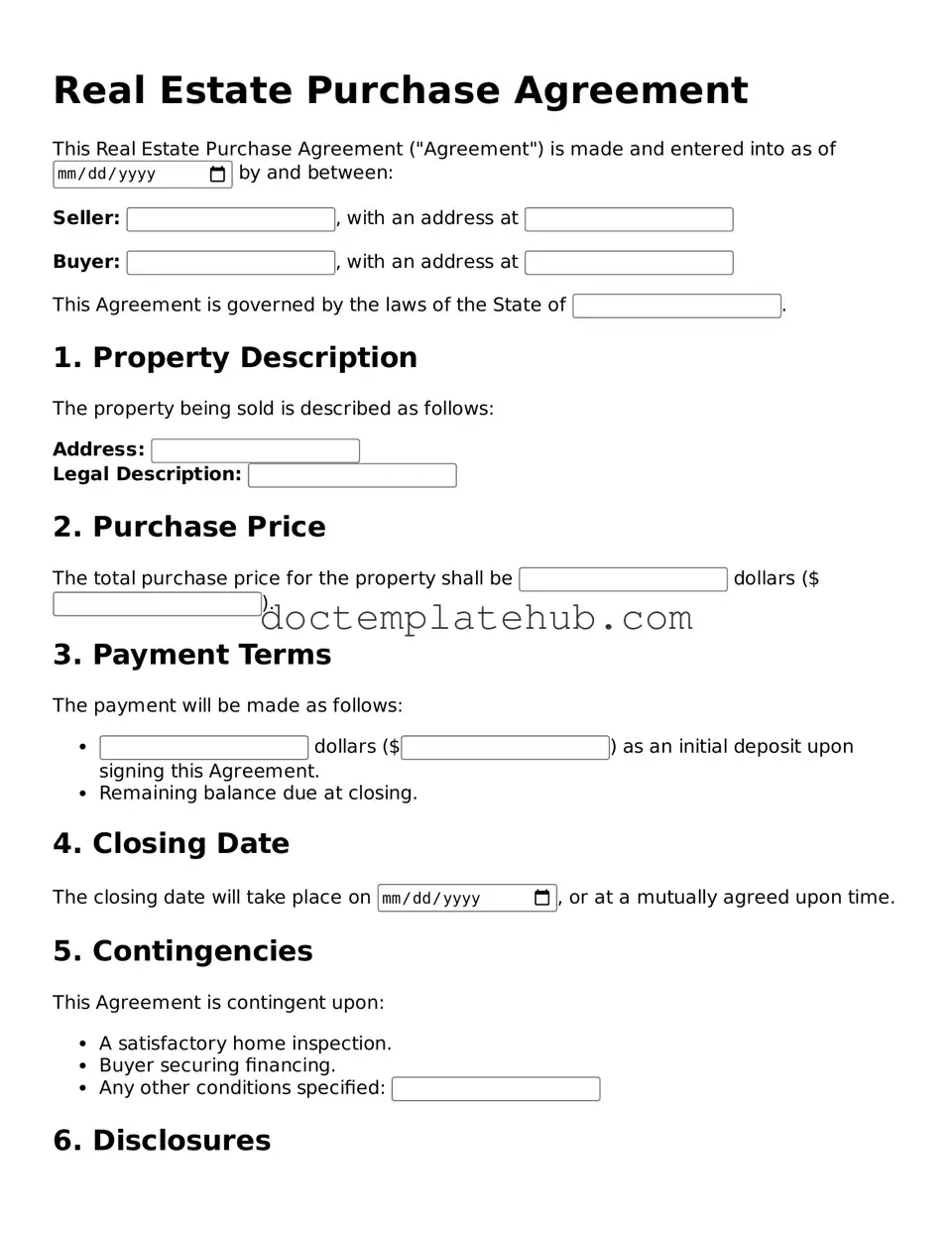What is a Real Estate Purchase Agreement?
A Real Estate Purchase Agreement is a legally binding contract between a buyer and a seller outlining the terms of a property sale. This document specifies key details such as the purchase price, property description, and closing date. It serves as a roadmap for the transaction, ensuring both parties understand their rights and obligations. By putting everything in writing, it minimizes misunderstandings and protects both the buyer and the seller throughout the process.
What are the essential components of a Real Estate Purchase Agreement?
Several critical components must be included in a Real Estate Purchase Agreement. First, the agreement should clearly identify the buyer and seller, along with their contact information. Next, it must describe the property being sold, including its address and legal description. The purchase price is another vital element, along with any earnest money deposit. Additionally, the agreement should outline contingencies, such as financing or inspections, and specify the closing date. Finally, it should address any inclusions or exclusions, like appliances or fixtures, that come with the sale.
How does a Real Estate Purchase Agreement protect both parties?
This agreement acts as a safeguard for both buyers and sellers. For buyers, it ensures they have a clear understanding of what they are purchasing and provides a framework for recourse if the seller fails to meet their obligations. For sellers, the agreement outlines the terms under which they will sell their property, helping to prevent potential disputes. By clearly defining the expectations and responsibilities of both parties, the agreement helps to create a smoother transaction and reduces the risk of legal issues down the line.
Can a Real Estate Purchase Agreement be modified after it is signed?
Yes, a Real Estate Purchase Agreement can be modified after it has been signed, but both parties must agree to any changes. Modifications can occur for various reasons, such as changes in the closing date or adjustments to the purchase price. It’s essential to document any changes in writing and have both parties sign the modified agreement to ensure that the new terms are enforceable. This practice helps maintain clarity and protects the interests of both the buyer and seller.
What happens if one party breaches the Real Estate Purchase Agreement?
If one party breaches the agreement, the other party has several options. They may choose to pursue legal remedies, which could include seeking damages or specific performance—meaning they can ask the court to enforce the terms of the contract. Alternatively, the non-breaching party may decide to terminate the agreement and seek a refund of any earnest money deposited. The specific actions available depend on the nature of the breach and the terms outlined in the agreement. Therefore, it’s crucial to understand the implications of breaching the contract and to seek legal advice if needed.
